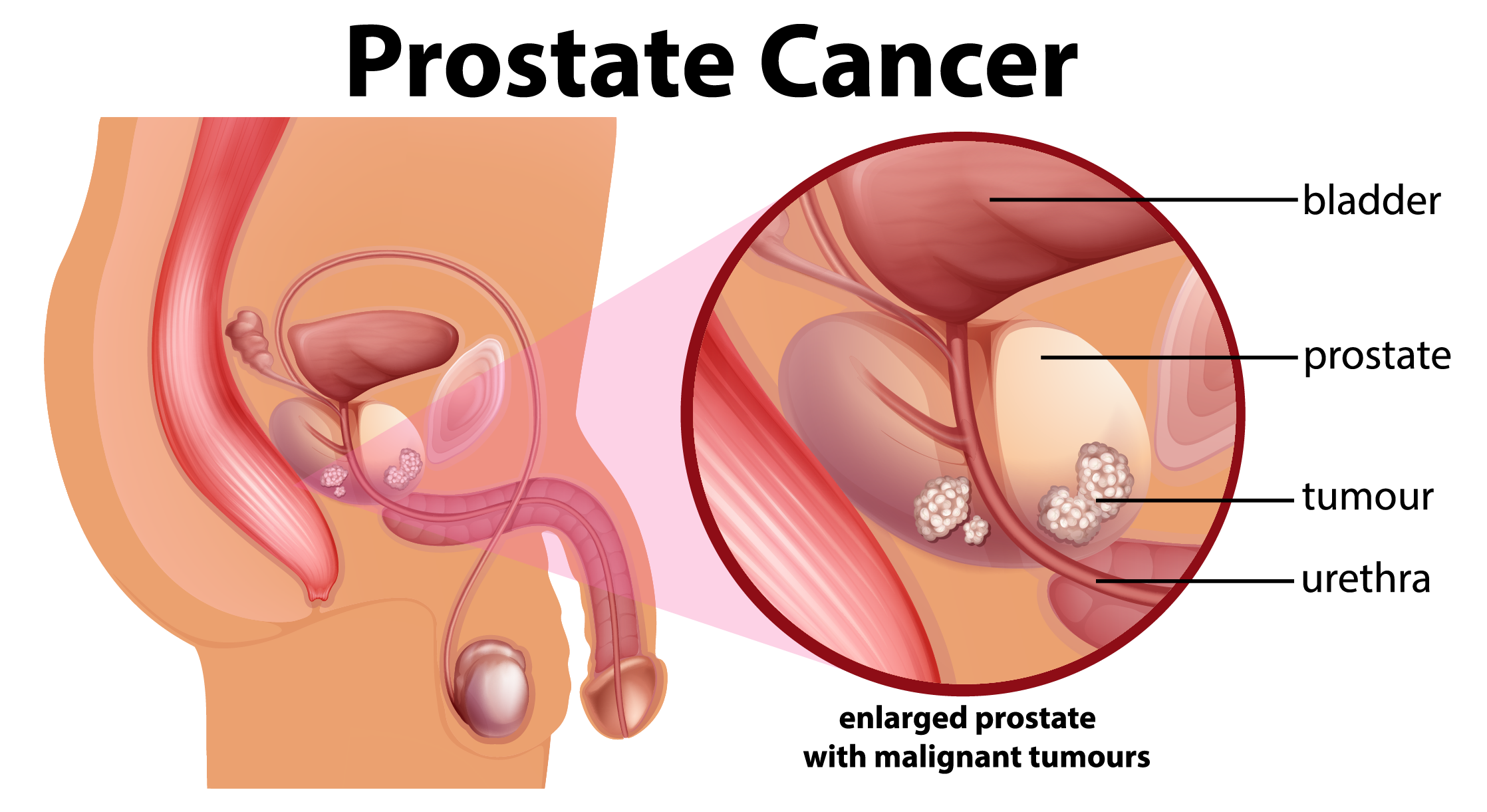Medical Care , Health & Wellness , Oncology (Cancer)
Robotic Surgery for Prostate Cancer
Dr Terence Lim Sey Kiat, Senior Consultant Urologist, discusses Robotic Surgery for Prostate Cancer

In Singapore, prostate cancer is the second most commonly diagnosed cancer in men and the fifth leading cause of death worldwide. As men move into their 50’s, their risk of prostate cancer increases. Thankfully, prostate cancer is treatable, and with early detection, one can make a full recovery.
The prostate gland is a walnut-sized gland located below the urinary bladder, surrounding the urethra, and is responsible for the production of prostatic fluid that nourishes the sperm. Its development is controlled by the male hormone, testosterone. Prostate cancer is the result of the uncontrolled proliferation of abnormal cells, resulting in a malignant tumour.
How is Prostate Cancer typically treated?
Treatment for prostate cancer largely depends on the risk classification and stage of the cancer. Prostate cancer is curable if detected and treated early. An early diagnosis translates to earlier treatment and better chances of making a full recovery.
Studies have shown that there is a 95-99% 5-year survival rate in men who were diagnosed with low and intermediate prostate cancer while it is localised. This percentage drops to 31% when the prostate cancer has spread to other parts of the body.
Active surveillance
For low-risk, localised prostate cancer, conservative measures may be recommended, and this involves closely monitoring the progress of the cancer. This is done through regular blood tests, digital rectal exams and prostate biopsies to monitor the cancer’s progression. If it progresses, treatment will be given promptly.
Treatment for localised prostate cancers
Localised prostate cancer refers to cancer that has not spread to other tissues or organs.
- Radical Prostatectomy — This surgical procedure involves removing the entire prostate and seminal vesicles. This can be done through open, laparoscopic or robot-assisted surgery.
With minimally invasive procedures such as laparoscopic or robot-assisted surgery comes smaller incisions. This, in turn, leads to a faster recovery, fewer complications and earlier discharge. Generally, patients can return to their normal activities after 2 to 4 weeks. - Radiation Therapy — Radiation therapy involves the use of high-powered energy rays or particles. Short-term hormonal treatment may be incorporated as well. This may consist of about 8 to 38 sessions, depending on the type of radiation schedule.
Radiation therapy may be recommended for older patients with multiple medical problems who should avoid general anaesthesia.
Treatment for metastatic prostate cancer
Metastatic prostate cancer refers to cancer that has spread to other tissues or organs. Treatment options include:
- Androgen Deprivation Therapy (ADT) — ADT helps suppress the testosterone levels in the body and slow down the progression of prostate cancer. ADT can be administered via regular injections with medication or surgical removal of both testes. ADT is often combined with novel hormonal agents.
- Chemotherapy — Chemotherapy is a viable option when prostate cancer has spread outside the prostate gland, and/or ADT is deemed ineffective. Recent research has shown that chemotherapy combined with ADT may be helpful in managing selected high-risk prostate cancer, and treatment is given every 3 weeks.
- Symptomatic Treatment — As its name suggests, symptomatic treatment involves the management of symptoms depending on where the cancer has spread. This includes analgesia or radiotherapy to relieve symptoms or surgeries for palliative care.
What is Robotic Surgery?
Contrary to popular belief, robotic surgery is not performed by a robot independently, but is performed by an experienced surgeon who guides the robot for the entire procedure via a console. These technological advancements allow for better visualisation, manual dexterity and control than what is possible with conventional techniques — a combination of the surgeon’s skill and critical thinking with the precision of a machine.
It allows the surgeon to reach hard-to-access areas with just small incisions. This leads to a lower risk of complications and shorter recovery times.
What is the difference between robotic surgery and traditional open surgery for prostate cancer?
First, it is important to understand that the prostate is a deep pelvic organ, and an open prostatectomy provides the benefit of having the surgeon’s hands in the body, offering excellent manual dexterity in instrument and tissue handling. However, this comes at the expense of a large surgical incision and limited vision.
For a robotic prostatectomy, smaller, keyhole-sized incisions about 1-1.5cm are made in the abdomen for miniature robotic instruments to pass through. These are used to remove the prostate and nearby tissues with great precision due to the high degree of range of motion of the robotic instruments. This is considered less invasive than an open radical prostatectomy, where the abdominal incision extends from the belly button to the pubic bone (8 - 10 inches).
As a three-dimensional endoscope is used, the surgeon has clear visualisation and a magnified view of the nerves, blood vessels and muscles surrounding the prostate gland, allowing for optimal dissection or preservation of these vital structures. Indeed studies have shown better functional outcomes with the robotic approach compared to laparoscopic or open approach.
With robotic surgery, recovery time is shortened to as little as 2 - 3 weeks, and hospital stay following robotic prostatectomy is generally 1 - 3 days. This is relatively shorter in contrast to 4 - 6 weeks recovery time and 5 - 7 days of hospital stay for an open radical prostatectomy. Depending on one’s age and current condition, most patients can also expect to have their potency return with or without the use of oral medications.
Ultimately, robotic surgery is a minimally invasive alternative to open surgery for prostate cancer. This means that the surgeon will only make small incisions during the surgery, which entails recovery-related benefits and fewer risks. The high-definition camera and miniature rotating instruments also allow for greater depth perception, range of movement and accuracy. These benefits include:
- Shorter hospital stay
- Quicker recovery
- Less post-operative pain
- Reduced complications
- Smaller scars
How would I know if I’m suitable for robotic surgery?
Generally, patients with localised prostate cancer are excellent candidates for robotic prostatectomy. Most patients who are candidates for an open radical prostatectomy are usually good candidates for the robotic approach.
However, patients with known metastatic or recurrent prostate cancer are not good candidates for robotic prostatectomy. This makes early detection of prostate cancer in its early stages crucial.
Summary
Early prostate cancer is usually asymptomatic. Symptoms such as difficulty urinating, unexplained weight loss, erectile dysfunction and blood in the urine and semen can occur and may not be specific to prostate cancer. Talk to your urologist about your risk of prostate cancer and the need for further testing to rule out prostate cancer. Prostate cancer, when picked up early, can be treated with excellent outcomes.
About Dr Terence Lim Sey Kiat
Dr Terence Lim is a Senior Consultant Urologist with a subspecialty in Uro-Oncology. He is also the Medical Director at Assure Urology & Robotic Centre. His clinical interests include Uro-Oncology, Minimally-invasive Urological Surgery, Urinary Stone Disease, Endourology and Prostate Health.
Prior to his private practice, Dr Terence Lim spent almost two decades in public healthcare. He served as the Senior Consultant and Chief of Department of Urology at Changi General Hospital (CGH). He is currently a Visiting Consultant at CGH. Dr Lim was also the director of CGH’s Advanced Surgical Centre, a committee dealing with complex surgeries, including robotic surgeries.
Doctors

Related Articles
Health & Wellness
How to Deal with Obesity & Diabetes?
The prevalence of obesity in the world have continued to increase significantly. It is estimated by WHO that 39% of adults aged 18 years and over were overweight in 2016, and 13% were obese.
Read moreMedical Care
Blood delivery drone due to become world’s fastest
New-generation drones slash delivery time of life-saving blood products and medicines in hard-to-reach areas in Rwanda
Read moreMedical Care
Better use your nose
In the long term, mouth breathing might lead to several complications
Read moreLatest Articles
Medical Care
Clinical Exercise Physiologist (CEP): The Emerging of Exercise is Medicine
How Exercising can be a Medicine
Read moreMedical Care
Reversing type 2 Diabetes: Embracing Hope and Determination
Experience the remarkable journey of Ash and his grandfather Atok as they conquer type 2 diabetes through unconventional methods, showcasing the power of love and determination over adversity.
Read moreMedical Care
Bladder Cancer: What You Need to Know
Empower yourself with our comprehensive guide to bladder cancer. Explore symptoms, diagnosis, treatments, and supportive resources to safeguard your health.
Read more